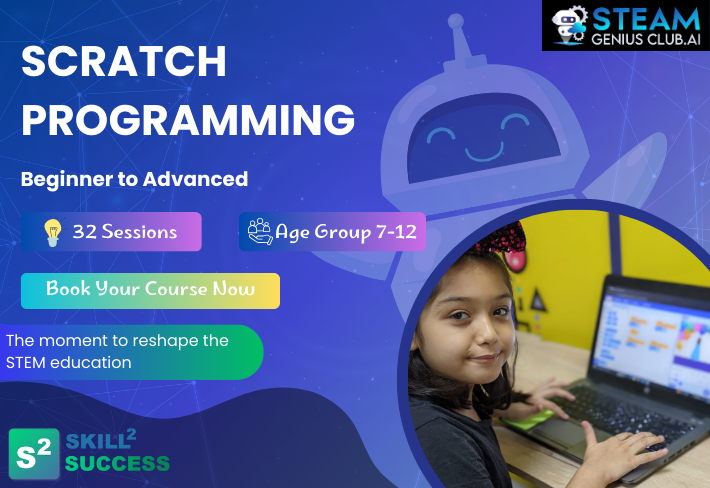
<p><br></p>
Set up Scratch accounts and explore the interface.
Learn motion, animation, and sound basics.
Introduce control structures: sequence, conditionals, and loops.
Create a simple interactive animation project.
Dive deeper into conditionals and sensing blocks.
Introduction to single-player game design.
Implement variables for score tracking.
Basics of debugging and project refinement.
Control sprites using mouse and keyboard inputs.
Design a simple multiplayer game with interactive elements.
Integrate sound effects and user interactions.
Complete a hands-on multiplayer game project.
No prior programming experience required!
Access to a computer or tablet with an internet connection.
A free Scratch account (created at scratch.mit.edu) to save and share your projects.
Set up Scratch accounts and explore the interface.
Learn motion, animation, and sound basics.
Introduce control structures: sequence, conditionals, and loops.
Create a simple interactive animation project.
Dive deeper into conditionals and sensing blocks.
Introduction to single-player game design.
Implement variables for score tracking.
Basics of debugging and project refinement.
Control sprites using mouse and keyboard inputs.
Design a simple multiplayer game with interactive elements.
Integrate sound effects and user interactions.
Complete a hands-on multiplayer game project.
Copyright © 2024 Skill2Success. All Rights Reserved